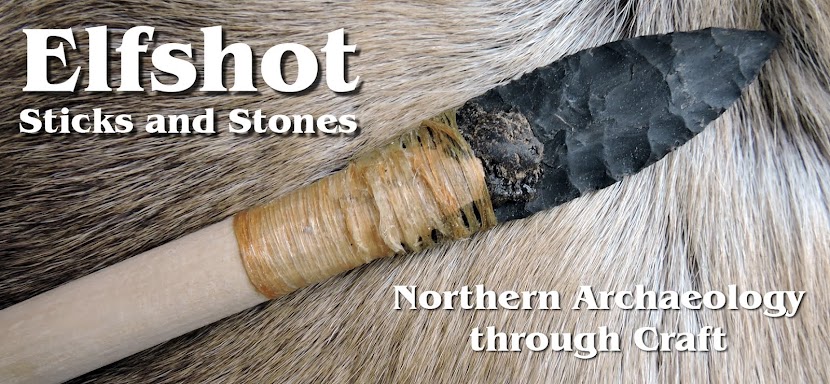
The Society for American Archaeology's 2014 conference will have a session dedicated to archaeological blogging. As a precursor to this session, bloggers with archaeology themed blogs have been invited to participate in a blog carnival hosted on Doug's Archaeology. Each month a new question will be asked and bloggers can participate by writing a post dedicated to exploring that month's question or questions. All of these blog posts will be collected and linked from a monthly wrap-up post on Doug's Archaeology. For November, the questions and my answers are:
Why blogging? – Why did you, or if it was a group- the group, start a blog?
 |
| Original Elfshot Blog Banner |
 |
| Some of the first reproductions profiled on this blog |
I suppose I could say that I started the blog to communicate about the archaeological past with a public audience, but that's kind of a given. The whole point of archaeology is to share what you find. The truth is that I started this blog to fill several roles and all of them were selfish. I wanted a portfolio of Elfshot's artifact reproduction and jewellery work to show future clients. In a similar vein, I wanted one place to link all the different online articles or profiles that may have been done on Elfshot in the past. I'd also noticed that I didn't have a very good system of record keeping when I made a new type of reproduction and found myself repeating the same mistakes over and over again because I couldn't recall what did or did not work in the past. When I start a new project, much of my process is trial and error, so I wanted to use this blog to record the things that I learned along the way so that I would not have to repeat the same mistakes the next time I worked on something similar. That's still how I approach the majority of the blog posts that deal with making artifact reproductions. I generally record the techniques or references that I think I'll need to know or remember the next time I work on a similar project. Knowing that there are people other than myself reading the blog means that I make these notes in slightly more detail and plainer language than I might if I knew that I'd be the only person reading them.
Why are you still blogging?
 |
| Still whittling away |
Its drifted over the years as I've done more fieldwork and Elfshot has been able to focus more on one-of-a-kind artifact reproductions and less on wholesale jewellery. Which I'm happy with. I enjoy exploring archaeological topics and meeting archaeologists through blogging.
 |
| Same old calendar |
Photo Credits: Tim Rast
















































